
Let's talk Chow Chows
A cherubic face encircled by a lion’s mane of plush fur: The very refined Chow Chow is one-of-a-kind. Princely in their conduct, some may take that as aloof, but they’re really just keeping to themselves. The breed bonds strongly to their human family and although they can be wary of strangers, they do warm up when properly introduced. Chow Chows are known to be fastidious - and easy to housebreak - a winning combination of traits all around.Official name: Chow Chow
Other names: Chow
Origins: China

| Drooling tendencies |
|
Warm weather? | |
| Shedding level | Suited to apartment living? | ||
| Energy Level (high, low, medium)* | Low | Family Pet?* |
|
| Compatibility with other pets | Can stay alone?* | 
|
* We advise against leaving pets alone for long stretches. Companionship can prevent emotional distress and destructive behaviour. Speak to your veterinarian for recommendations.
Every pet is different, even within a breed; this snapshot of this breed specifics should be taken as an indication.
For a happy healthy and well-behaved pet, we recommend educating and socializing your pet as well as covering their basic welfare needs (and their social and behavioral needs).
Pets should never be left unsupervised with a child.
Contact your breeder or veterinarian for further advice.
All domestic pets are sociable and prefer company. However, they can be taught to cope with solitude from an early age. Seek the advice of your veterinarian or trainer to help you do this.
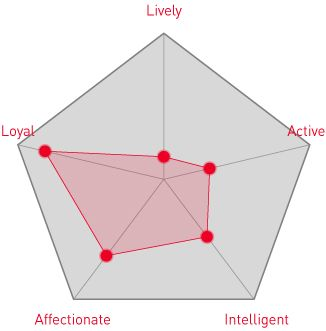

| Baby age | Birth to 2 months |
| Puppy age | 2 to 12 months |
| Adult age | 1 to 7 years |
| Mature age | 7 to 10 years |
| Senior age | from 10 years |
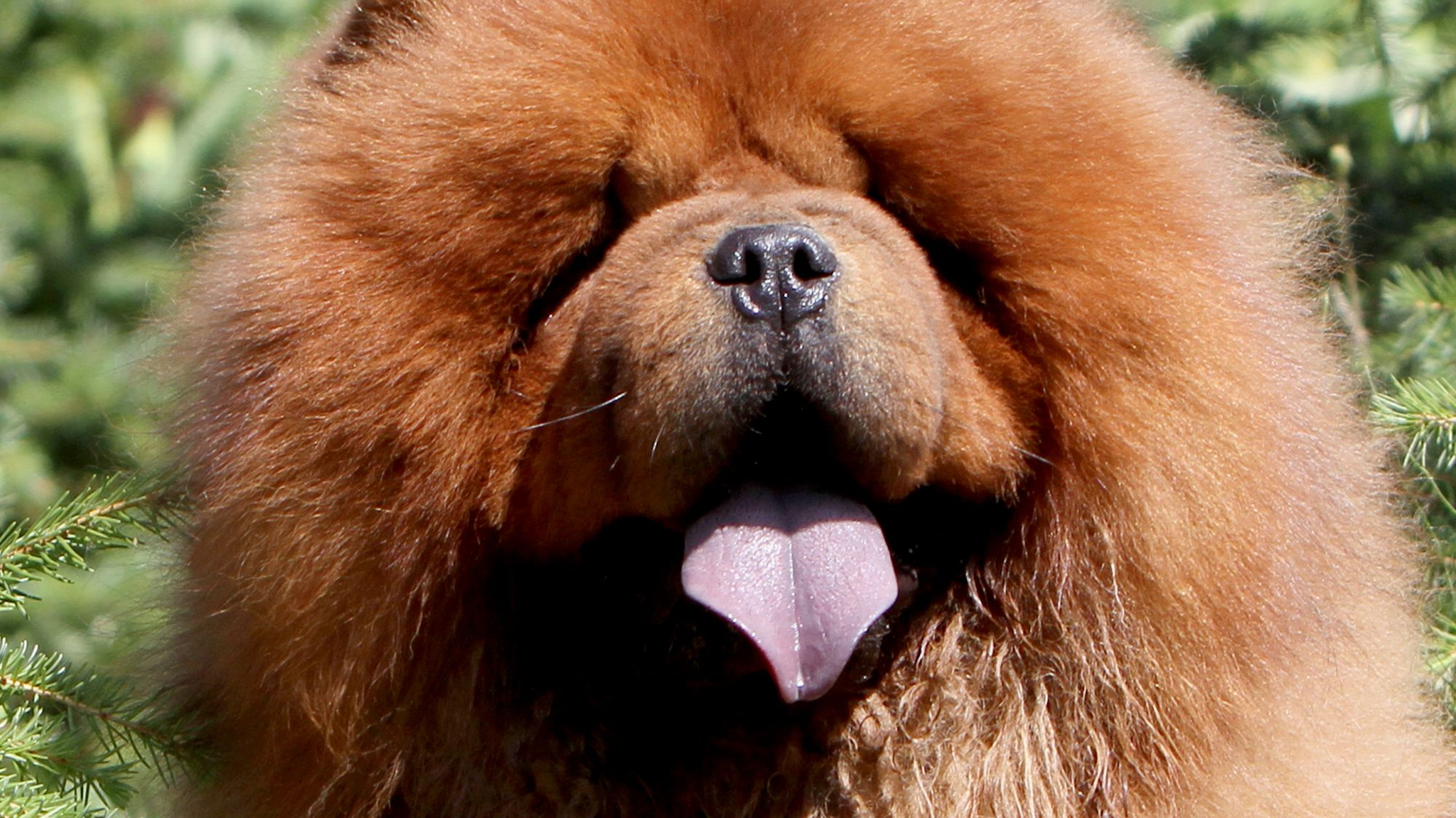
1/7
Get to know the Chow Chow
All you need to know about the breed
Maybe it was years of keeping watch at the palaces of Chinese Emperors and hanging with nobility that formed the Chow Chow into the noble breed they are but the world is better for it. Their dignified stare emanates from a face enrobed by a thick mane of fur that’s usually golden, but also red, black, blue (!), chestnut or cream white. Leontyne in appearance, they’re finished off by sturdy limbs, substantial paws, and a hefty but strong body.
The Chow Chow dog is not at all shy or aggressive. Call them the strong silent type. They may sport what looks like a bit of a scowl but their overall demeanour is quite serene. The Chow Chow was bred over centuries to be incredibly loyal, just one of their many winning attributes.
One of the Chow Chow’s other great qualities is their clean nature. They are practically odour-free and very meticulous with their surroundings and conduct.
The Chow Chow dog also takes to city life without missing a beat - not that they can’t also adjust to bigger, more rural spaces but given their particular nature, being in a more low-key place is preferable. When newcomers enter their domain, the Chow Chow is often quite wary, but with early socialisation, your dog can grow up to be a regular canine social butterfly.
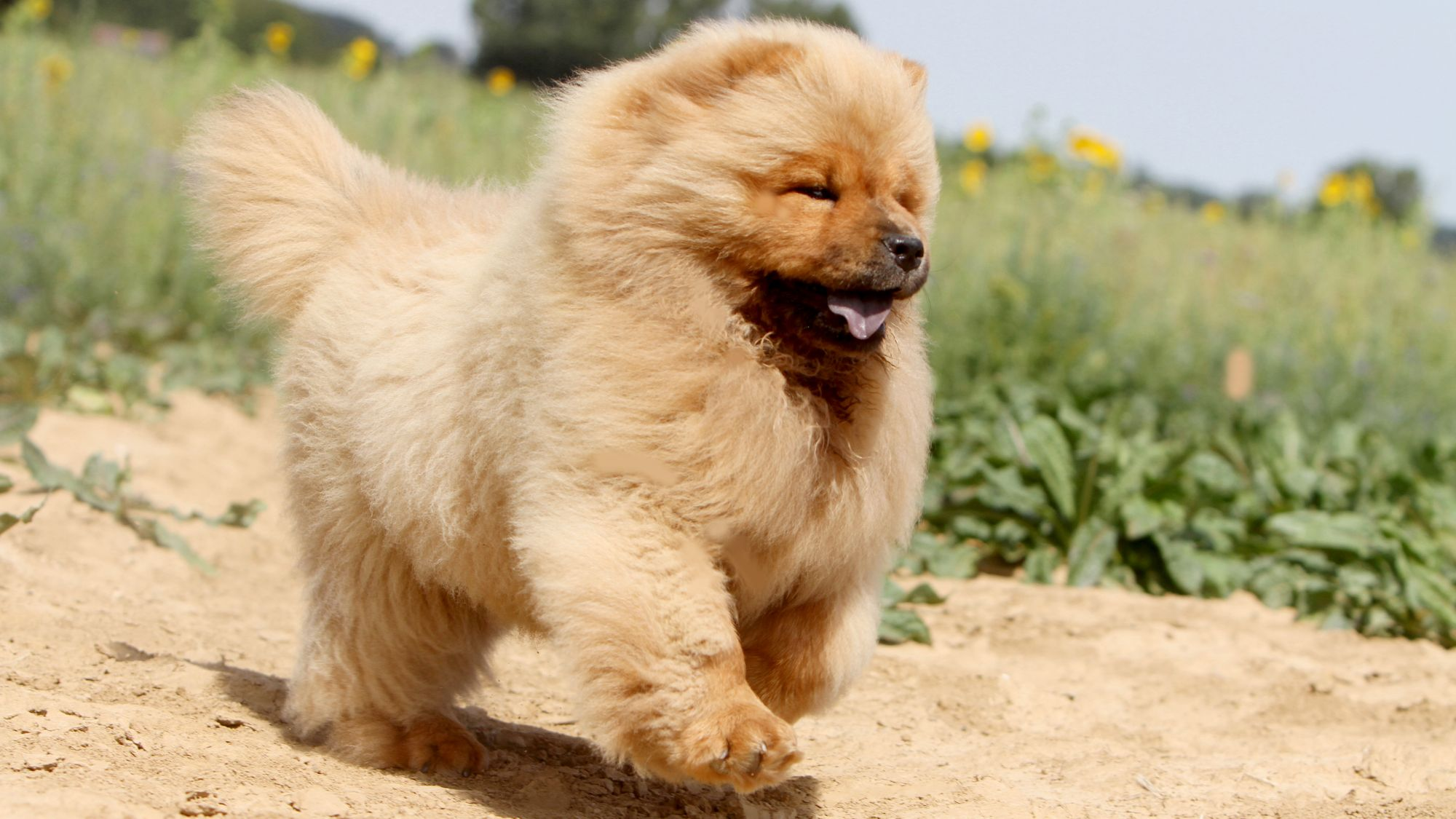
2/7
2 facts about Chow Chows
1. Barker, not a barker
Of regal bearing - thank you very much - the Chow Chow breed isn’t terribly vocal, such is their subdued nature and need to sit back and assess. That said, the breed was raised to protect palaces so they know to express themselves on an as-needed basis. That’s usually if they feel you’re in danger or something strange is afoot.
2. Why so blue?
Chow Chows are known for their blue-black tongue, one of their many outstanding and unique characteristics. Chow Chow puppies are born with pink tongues and as their eyes open, the blue-black colour sets in, reaching its full hue at six months. The atypical tint is a result of a higher amount of pigment cells on the tongue’s surface. A Chow Chow with a dark tongue is considered top dog when it comes to championship ranking.
History of the breed
Look closely at artifacts from China’s Han Dynasty in the year 206 B.C. and you will see the large fluffy Chow Chow often depicted. The breed counts themselves among the world’s oldest breeds, and were traditionally a prized companion of nobles. In the 8th Century, it is said one emperor of the Tang Dynasty housed 5,000 Chow Chows in his kennel. A working dog as well, they’ve been used for sport, as a guardian, and for labour.
The Chow Chow’s plush coat and curved tail is said to be the original of the spitz-type breeds, giving rise to others like the Pomeranian and Akita. Their name stems from British importers who brought the breed in along with other foreign goods from Asia, logging them simply as “various goods” on shipping manifests.
An exhibition of Chow Chows at the London Zoo in the 1820s brought the breed into prominence and Queen Victoria, who reigned later in the century, was a proponent of the breed. They then made their way to America in the 1890s, reaching huge popularity in the 1980s. The American Kennel Club had already recognised the breed in 1903.

4/7
From head to tail
Physical characteristics of Chow Chows
1. الأذنان
آذان مرنة ولكن ليست ثقيلة تتدلى بجانب رأس الكلب
2. الشعر
شعر قصير وكثيف فوق طبقة سفلية مقاومة للماء
3. الفراء
فراء يتراوح بين الأسود إلى لون الشوكولاتة أو الأصفر، ومن الكريمي الفاتح إلى المحمر
4. الذيل
ذيل منتصب وهو بطبيعته طويل ونادرًا ما يتوقف عن الاهتزاز – والجسم كله يمكن يهتز في بعض الأحيان.
5. الساقان والعمود الفقري
متناسب بشكل جيد، مع توازن جيد بين طول الساق والعمود الفقري.
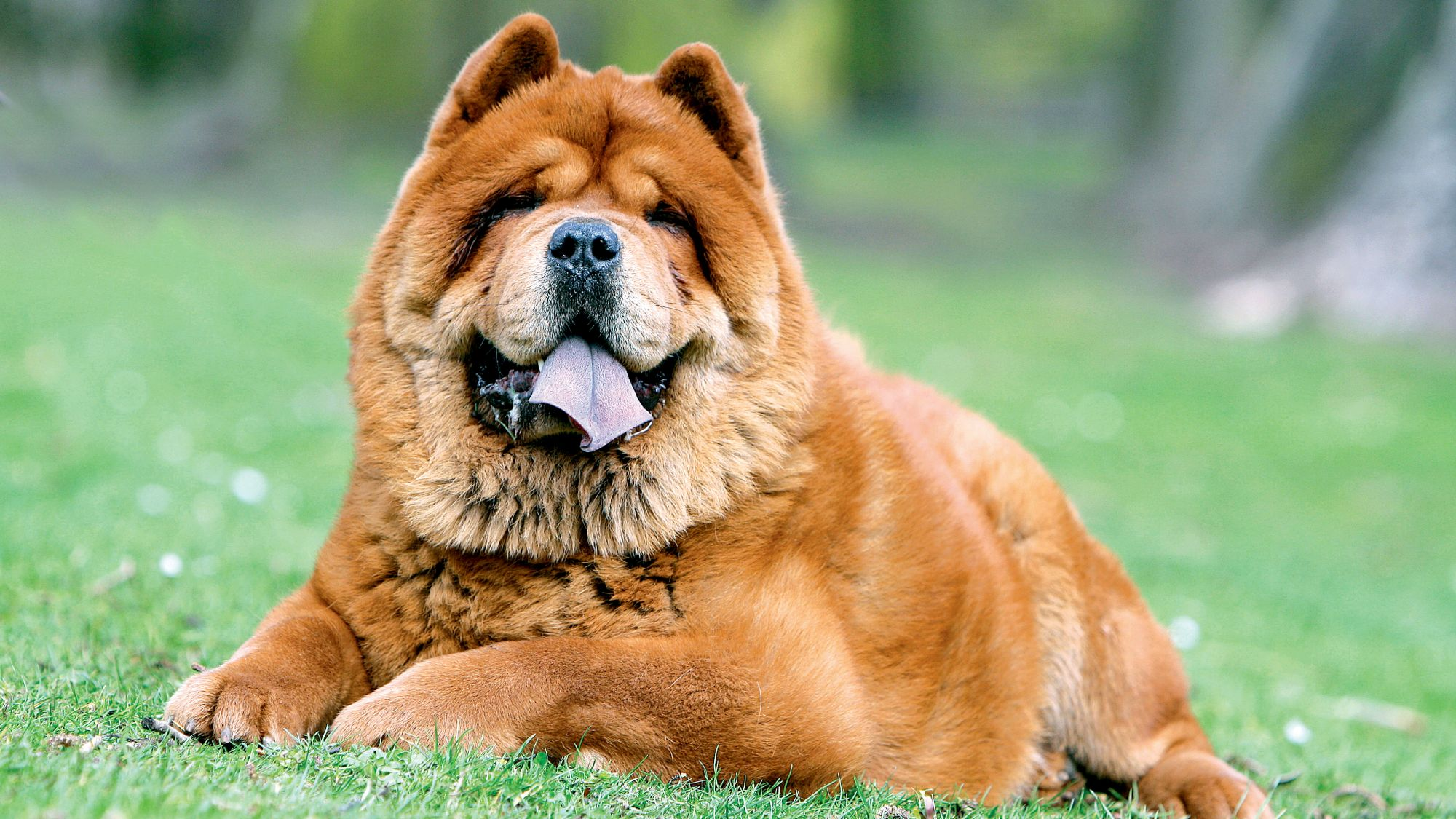
5/7
Things to look out for
From specific breed traits to a general health overview, here are some interesting facts about your Chow Chow
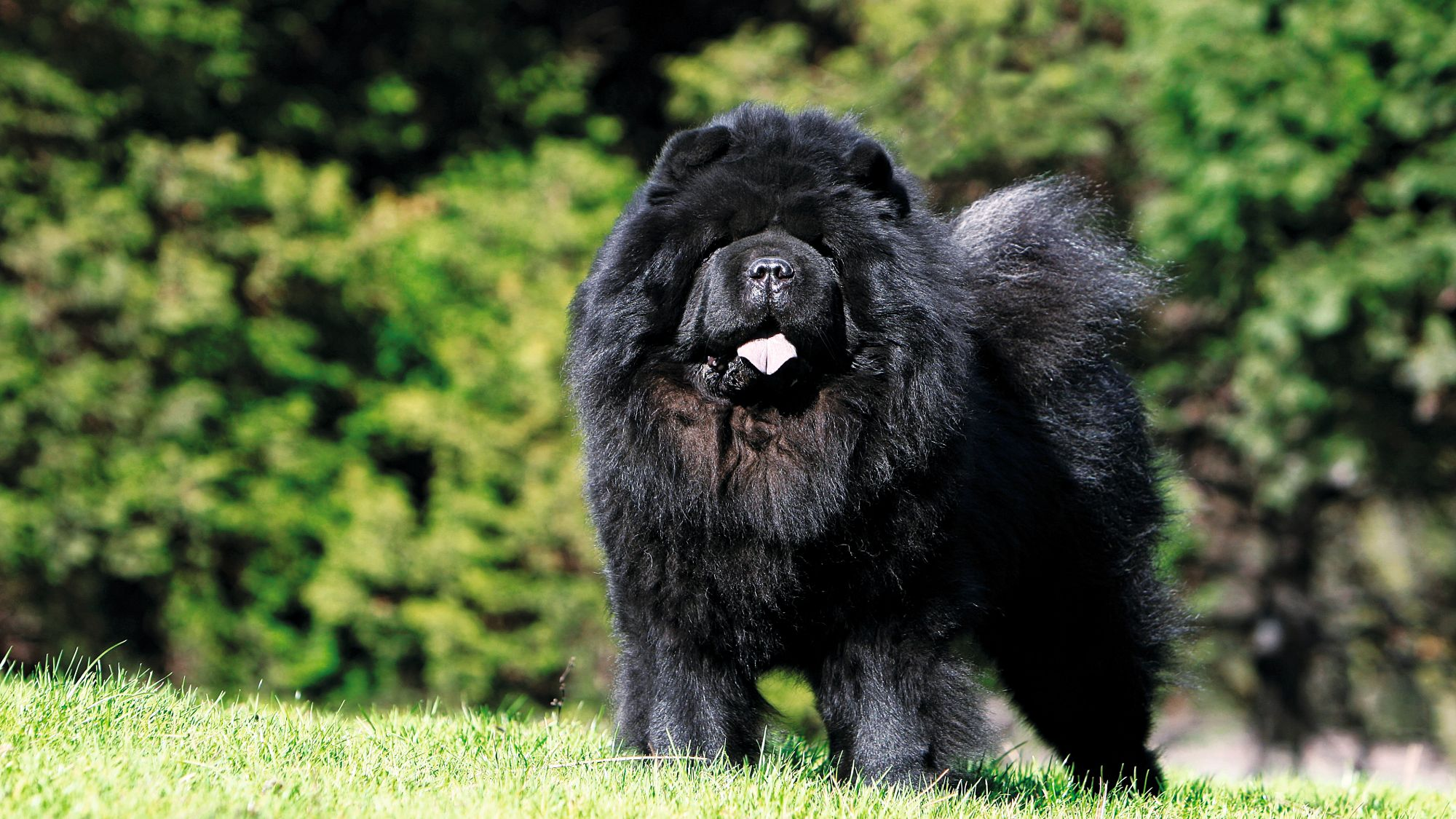
6/7
Caring for your Chow Chow
Grooming, training and exercise tips
Forever fluffy, grooming the Chow Chow is - you guessed it - a commitment, but not overly demanding. They do shed a good deal so stay on top of brushing. Rough-coat Chow Chows require brushing every other day in order to prevent matting; smooth-coat Chow Chows only need brushing twice a week on average. The breed has very little naturally occurring odour to boot, a plus when it comes to their cleanliness. Bathing will need to happen though, but twice a year on average is suitable, unless they get messy. The Chow Chow breed does not require a great deal of exercise to stay strong. Daily walks, short jogs, or romps in the garden are sufficient to keep their strong bodies intact. Take caution when exercising your Chow Chow in higher temperatures as they can quickly overheat due to all of that fur and the brachycephalic nature of their face, meaning a more pushed-in snout. The number one trait of the Chow Chow dog is their reserved manner. This along with their independence can make training the Chow Chow a process. They will resist any measures that push them too forcefully. A breed as subtle as the Chow Chow requires an owner who’s the same, who can give commands with respect and leadership, and offer rewards in return. Best to take them from their daily ration to avoid any undue weight gain.7/7
All about Chow Chows
One look at the buoyant face of a Chow Chow and it’s easy to think they’re extremely friendly. They are however fairly standoffish - not that they’re not affectionate but the breed definitely takes their time warming up to all who enter the inner circle. The Chow Chow is used to being independent, which is a great trait for those who want a mature canine on the homefront. Go slow with introductions and socialise them when young so they’re used to new friends of all sorts.
The Chow Chow dog possesses so many great traits: unbending loyalty, steadfastness, and high intelligence but one thing they are as well is stubborn. The breed tends to be independent-minded but their determined nature doesn’t mean they’re hard to train, it just means repetition may be needed. Praise and more praise will bring out the best behaviour.
Read more on this topic


How to adopt a dog

Things to consider before getting a dog
Sources
1 - Veterinary Centers of America https://vcahospitals.com/
2 - Royal Canin Dog Encyclopaedia. Ed 2010 and 2020
3 - Banfield Pet Hospital https://www.banfield.com/
4 - Royal Canin BHN Product Book
5 - American Kennel Club https://www.akc.org/